WHO WANTS TO LIVE FOREVER?
I SEE ALL YOUR HANDS ARE UP AND WAVING SKYHIGH.
YES ME TOO, I WISH TO LIVE FOREVER OR AT THE VERY LEAST ATTEND THE FUNERALS OF ALL MY ENEMIES HEHEHEH
THE MOST FAMOUS INDIVIDUAL WHO TRIED EVERYTHING IN HIS EARTHLY POWER TO ATTAIN IMMORTALITY WAS EMPEROR SHI HUANG TI WHO UNIFIED CHINA AND BECAME THE FIRST SO CALLED YELLOW EMPEROR. ALAS, IT IS SAID HIS ATTEMPTS AT INGESTING, EATING AND DRINKING SO MANY CONCOCTIONS INCLUDING LEAD, ARSENIC AND MERCURY THAT HIS POTIONS TO LENGTHEN HIS LIFE DRASTICALLY SHORTENED IT!
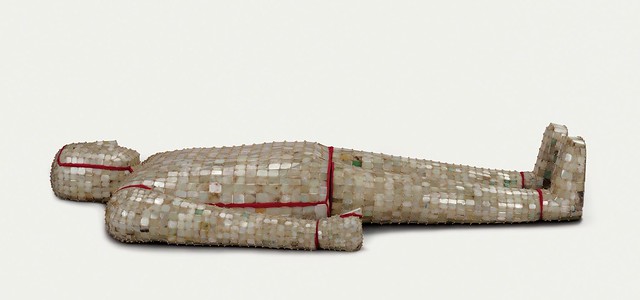
I want to wear this jade suit when I join Buddha in the godhead but due to budget, I will be burned and my ashes shoved inside a jar. This jade suit is 2nd century BC from Western Han dynasty

I also don't mind being buried inside this uber cool jade coffin although I still prefer to wear the jade suit above but this should be more comfortable with plenty of elbow room. This coffin is also 2nd century BC from Western Han dynasty 206 BC to 220 AD
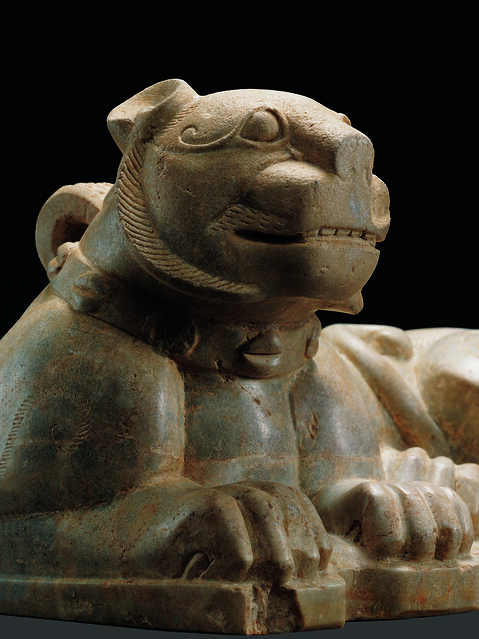
Stone lion to keep other beasts away so the owner could sleep in peace. Also 2nd century BC, Western Han dynasty

A court minion to attend to his boss. He was an official, 2nd century BC, Western Han dynasty
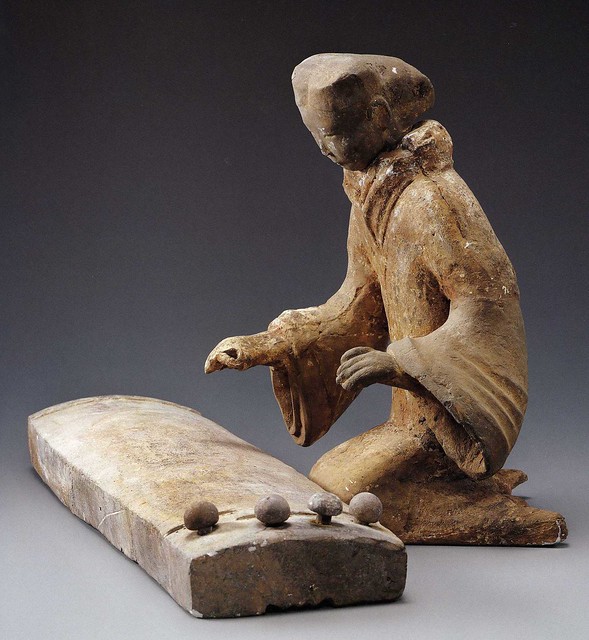
A pottery musician to entertain and amuse the deceased or he might, well, die from boredom.
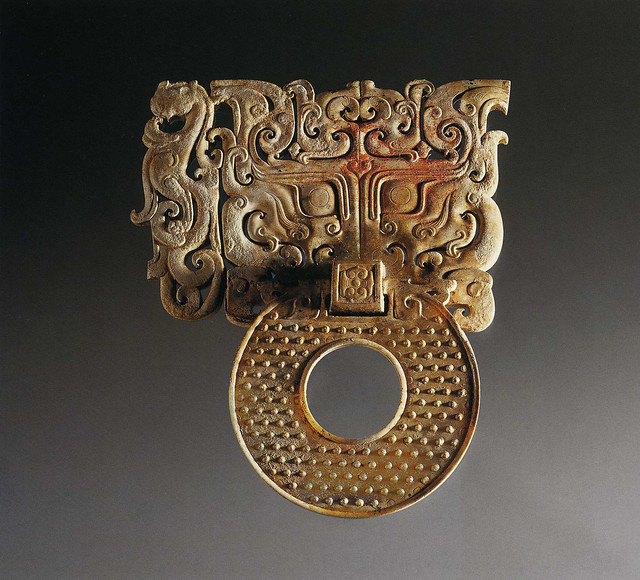
Jade dragon pendant

Jade ornament with dragon mask
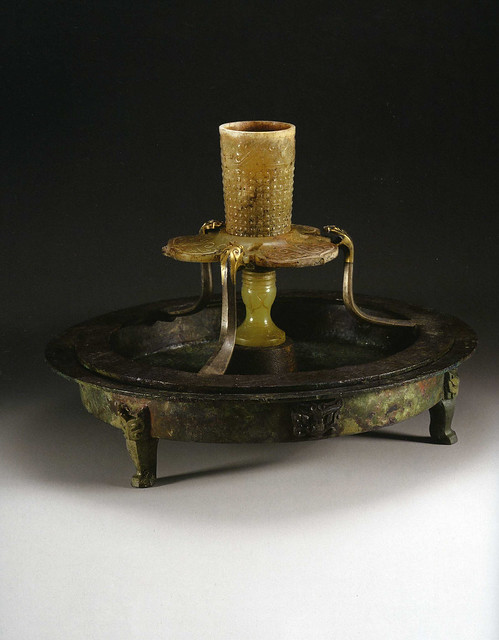
Jade cup
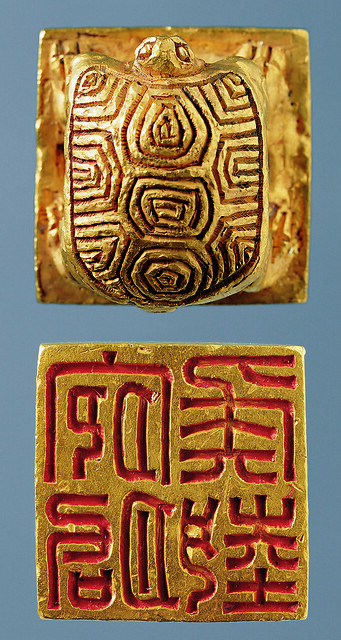
Gold Seal belonging to the Marquis of Wanqu
2nd century, Western Han

Gold belt plaque
Oh well, he should have known better and continue enjoying his gilded life since he was already lord and master of millions of chinks.
Greed is a major sin and one of the 7 deadly sins remember?
But if you fail t love forever, it is natural you wish to live well, very well, in the afterlife! No point living luxuriously now and living in abject poverty in the next! I am all prepared. My parents bought a small shrine in the Double Dragons Temple in Bachok, Kelantan for their remains and told me to go pray there on Ching Ming. I was annoyed as they were asked about me! They replied since I was so westernised and jet setting, they assumed I would probably end my days in glam London, Paris or New York. But I said I wanna be buried, oh, have my ashes put inside an urn next to theirs. They smiled and said there is space for 3 jars! So we will all be together in the next life! I am the only child and since I am childless, the greatestest Kee branch will end with me.
When my dad bought the shrine which is just one of dozens of small structures the size of a small cupboard, directly in front was verdant, green and lush paddy fields. Since news broke my ashes would be placed there, hundreds demanded new plots and now the paddy field has dwindled drastically as land was annexed to build more funeral sites! Oh well, from high heaven I can gaze down benevolently on you mere mortals, inheritors of this planet. Wonder if I can stare down on other planets as well and see what is going on in the dark side of the universe!
This very human obsession with life after death and earthly struggle for power is the theme for this grand, very important exhibition to be held at Fitzwilliam Museum in Cambridge, England. I know the theme sounds morbid but where there is life, there is death, sure as there are taxes!
So if you are in UK from 5 May to 11 November, make sure you visit this exhibition, more so if you are a chink and need some information about how our glorious ancestors lived, died and prepared funeral accoutrements for their demise.
The Search for Immortality: Tomb Treasures of Han China
5 May to 11 November 2012 | The Fitzwilliam Museum, Cambridge
Curated by Dr James Lin
In partnership with China’s State Administration for Cultural Heritage, Art Exhibitions China, Xuzhou Museum and the Museum of the Mausoleum of the Nanyue Kings
![]()
In the first exhibition of its kind, the Fitzwilliam Museum will relate the story of the quest for immortality and struggle for imperial legitimacy in ancient China’s Han Dynasty. The Search for Immortality: Tomb Treasures of Han China will feature over 300 treasures in jade, gold, silver, bronze and ceramics in the largest and most important exhibition of ancient royal treasures ever to travel outside China.
The Han Dynasty established the basis for unified rule of China up to the present day. To maintain this hard-won empire the Han emperors had to engage in a constant struggle for power and legitimacy, with contests that took place on symbolic battlefields as much as on real ones. While written accounts provide an outline of these events, it is through the stunning archaeological discoveries of recent decades that the full drama and spectacle of this critical episode in Chinese history has been brought to life.
Dr Timothy Potts, Director of the Fitzwilliam Museum, commented: “It is impossible to overstate the importance of the Han Dynasty in the formation of a Chinese national culture and identity. At the time of the ancient Romans, the Han emperors were the first to unify a large part of the regions we now know as China under a sustained empire, which they ruled virtually unchallenged for 400 years. The Han Dynasty gave its name to the Chinese language, its script and the vast majority of the Chinese people. It was arguably the defining period of China’s history and the point of genesis for the China of today. The spectacular objects in this exhibition bring to Cambridge the finest treasures from the tombs of the Han royal family, the superb goldwork, jades and other exquisitely crafted offerings the kings chose to be buried with on their journey to the afterlife. For their artistry, refinement and pure beauty they rival anything from the ancient world.”
This pioneering exhibition will compare the spectacular tombs of two rival power factions: the Han imperial family in the northern ‘cradle’ of Chinese history, and the Kingdom of Nanyue in the south, whose capital in modern-day Guangzhou formed the gateway to the rich trade routes of the China Sea and Indian Ocean. Objects from these tombs have never before been displayed together as a single exhibition. Through the exhibition it is revealed how, in both life and in death, Empire and Kingdom played a diplomatic game of cat and mouse, one to assert its supremacy, the other to preserve its autonomy.
No comments:
Post a Comment